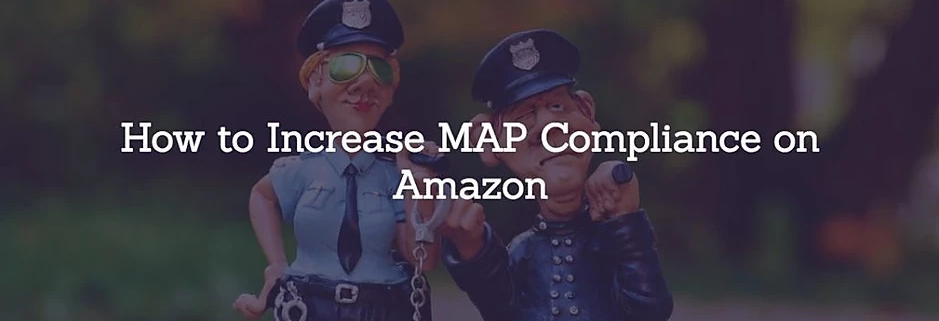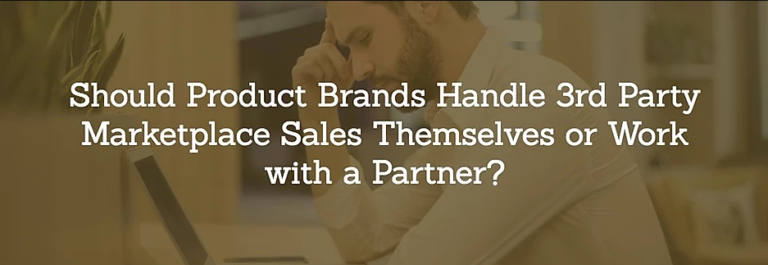Resources
Relevant Information and Actionable Takeaways

Does your company sell to brick & mortar retailers? Are your company’s products also for sale on Amazon – often at prices that are below MAP?
If you’re a brand selling to bricks & mortar retailers and you’re struggling to enforce MAP pricing on Amazon, you are undoubtedly aware of two major issues:
- When your products are available on Amazon below MAP, your brick & mortar retailers tend get pretty upset
- Controlling MAP on Amazon can be a huge challenge
The Challenge of Managing MAP on Amazon
If MAP pricing is important to your brand, managing it on Amazon is an ongoing challenge that you are going to have to deal with.
If you don’t actively manage it, you are essentially giving up control of your product(s) on Amazon – which over the long term, will negatively impact both your relationships with your retail partners, as well as your brand equity overall.
While there is no ‘silver bullet’ for MAP pricing management, there are definitely a number of steps that you can take to keep control of your product listings on Amazon.
Steps to Managing MAP Pricing On Amazon
The first of these steps is to sign an exclusive agreement with a single third party seller and then work with them, and Amazon, to systematically remove all of the other 3rd party sellers on a given product listing.
Once you have decided to work with a single 3rd party seller, ensure that any distributors that sell your products know that in order for any retailer to get an approved wholesale account, these retailers must have a verified physical location, and they aren’t going to be permitted to sell the product on Amazon.com.
The next step is going to be to contact each of the other sellers on your product listing and find out where they got their product from. As a part of this conversation, you should also inform them that they are in violation of your MAP policy, plus they aren’t authorized to sell your products on Amazon. If they don’t agree to remove their listing, you should check how much inventory they have, and then, if necessary, have your attorney send a cease and desist letter.
To check how much inventory they have, simply try to add 999 items to cart and Amazon will tell you how many they have left in the warehouse. If they have a sufficient quantity to justify the effort, then go ahead and have your attorney send the letter.

In addition to sending the letter to the seller, you should also inform Amazon that you have an exclusive agreement with just one seller, you have a MAP policy, and that this seller is in violation of both.
How to Keep Control of Your Amazon Presence
The easiest way to keep control of your product’s presence on Amazon is to work with only one seller in an exclusive relationship. That way, you will have more control over things like:
- MAP pricing
- Promotions
- Inventory levels
- Customer service levels
- Product listing quality
- Sponsored products (PPC advertising)
Working with a single seller will not decrease your sales. In fact, if you select the right 3rd party selling partner, you should expect them to actually help increase sales.
How to Remove Unauthorized Sellers From Your Product Listing
The following information came to me from Cynthia Stine, and when it comes to Amazon’s policies, she is one of the experts I trust. She provided this update (in italics) on August 24, 2016.
Yesterday Amazon rolled out brand-level un-gating with no fanfare or warning. While we still have many unanswered questions, I wanted to share what we’ve observed and let you know that we are doing our best to find answers to your questions.
WHAT HAPPENED?
There are some brands where you now need to get approved in order to sell them.
- Must have invoices or a letter from the manufacturer to get approved
- Some brands also require a fee ranging from $500-$5000 in order to sell
- For some brands you now need: 1) category ungating, 2) brand ungating and 3) permission for specific ASINs. So, if you’ve sold a particular item in the past with no troubles you may easily get permission to sell the ASIN, but you will still need to get permission to sell the brand.
- We can’t see the pattern of brands yet and don’t know if it is because it is rolling out over time or some other reason.
So what does this mean for your brand? While I cannot say for sure at this point, I would suggest that if you want to regain control of your product listing(s) that you contact Amazon directly and ask about getting your brand gated.



